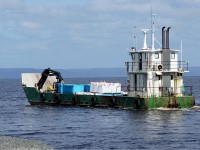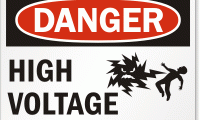We can’t stress enough just how dangerous confined spaces are. Not only are areas in an enclosed environment uncomfortable for the person inside, but they’re also often hiding hidden dangers that can severely affect the health of those within or – in the worst case scenario – can cause death.
It is the responsibility of any employer to make sure that the risks posed by confined spaces and other dangerous environments are defined in a risk assessment. The employer should also ensure that all employees receive information, specialist training and instruction on how to work within small confined environments.
At a Scottish Salmon Farm in July 2011, two companies were fined a total of £640,000 as a result of neglecting the risk assessments, training and instruction that should have been provided to their workers. This negligence led to the death of two of their employees as well as the huge fine.
The confined space incident occurred when two employees who were contracted to a fix a hydraulic crane on a fishing barge entered a confined space below the deck. Due to the area remaining unused and sealed for a significant period of time, rust damage in the metalwork of the barge consumed most of the oxygen from the area, causing one worker to pass out and the other to manage to escape despite being incredibly disoriented.
This employee quickly alerted others to the individual trapped within the confined space and a rescue was attempted. Upon entering the area the other two employees who staged the rescue were then overcome by the lack of oxygen in the air and lost consciousness.
Emergency services that arrived on the scene soon afterwards were able to enter the oxygen-starved enclosed space and remove the three men from the dangerous area. They were able to revive the first employee, but the two who had attempted to rescue him were pronounced dead at the scene.
When the incident went to court, the company was found to have neglected their responsibility as an employer. Had they used the correct training in confined spaces and associated instructions, the lives of the two employees may have been saved.
It is important for any organisation to realise the risk that a confined space such as this one has. A confined space can be absolutely anywhere and under Section 2 (1) of the Health and Safety at Work etc Act 1974 states: “It shall be the duty of every employer to ensure, so far as is reasonably practicable, the health, safety and welfare at work of all his employees.”
The HSE (Health and Safety Executive) defines a confined space as “a place which is substantially enclosed (though not always entirely), and where serious injury can occur from hazardous substances or conditions within the space of nearby (e.g. lack of oxygen).” At all times the employer must undergo a risk assessment to define these areas, instruct their employees on how to understand and identify these areas and supply equipment/training that will allow the employees to work safely within the area.
Every single year, incidents such as this one occur because workers simply aren’t aware either of the risk posed by an enclosed space or alternatively don’t even realise the place they are working in is defined as a confined space.
A confined space is much more dangerous than an open area because it amplifies the risks posed by hazards. The following are just a few of the risks that are possible within enclosed environments:
• Air Quality – in a confined space the area quality is often not sufficiently ventilated, leading to the presence of poisonous/hazardous substances and a lack of oxygen in order for humans to breathe. This can lead to death, permanent brain damage due to oxygen starvation, lung problems and countless other problems. Employees working within confined spaces with poor air quality must be provided with equipment and measures necessary to ensure their safety at all times.
• Fire Hazards – The smoke and heat caused by fires in an enclosed area limits the escape of the employees within the enclosed area and can cause asphyxiation due to smoke inhalation and death by significant burns. Employees should always be instructed on best practice to minimise the risk of fires within the area.
• Crushing/Tripping Hazards – Underground areas are extremely hazardous due to their confined and unpredictable nature. Even the slightest shift in underground integrity can be deadly and all employees must be equipped with protective equipment such as hard hats, protective gloves, safety goggles and must be correctly educated on safety in the underground workplace.
• High Noise Levels – In a normal area, high levels of noise can cause irreparable damage to the ears. In a confined space, this level of damage can is amplified significantly as there is less room for sound to move.
Don’t Neglect Confined Space Awareness!
The risks posed to both you and your employees by not adequately identifying confined spaces and instructing others of their risks are extremely vast.
All employees should be given confined space awareness and confined space training courses to ensure that they know the procedure for working within these environments safely and unnecessary incidents can be avoided. It is also the responsibility of the employer to provide the equipment necessary to maintain this safety level.
By providing this service employees in hazardous enclosed areas can work with significantly reduced risks and can do the job they’re meant to do knowing that their employer is protecting them from harm.








